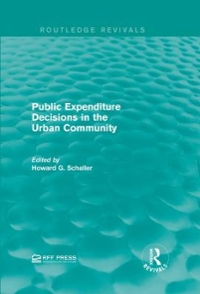Question
2. Suppose that a household resides in an urban area at a distance to the downtown of 8 miles. The household occupies 3,000 square feet
2. Suppose that a household resides in an urban area at a distance to the downtown of 8 miles. The household occupies 3,000 square feet of land and at this distance, land rent is $1.50 per year per square foot. Land rent declines by $.05 per square foot as distance to downtown increases by one mile. A member of the household must travel downtown to work five days per week for 50 weeks per year. The cost of this trip is $4.00 per day, which includes both money cost and time cost converted to moneyso the marginal cost per round trip mile is $.50.
A. Is the household in locational equilibrium? How did you determine your answer? Specifically, what equation did you use?
B. If the household is not in locational equilibrium, which direction should it move to increase its well-being?
C. What would the slope of the land rent function need to be for the household to be in locational equilibrium?
Step by Step Solution
There are 3 Steps involved in it
Step: 1

Get Instant Access to Expert-Tailored Solutions
See step-by-step solutions with expert insights and AI powered tools for academic success
Step: 2

Step: 3

Ace Your Homework with AI
Get the answers you need in no time with our AI-driven, step-by-step assistance
Get Started


